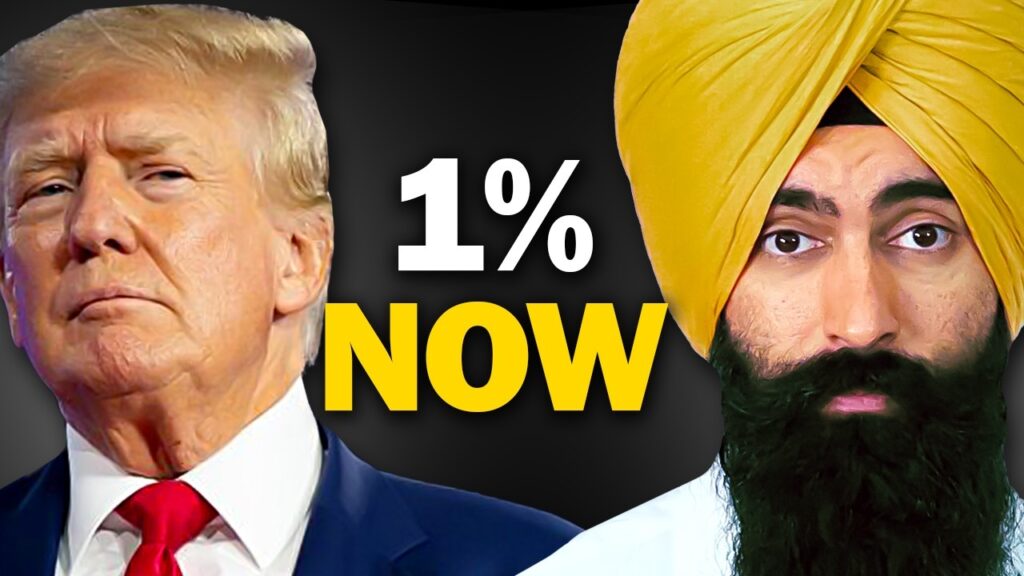The Real Reason President Trump Wants 1% Interest Rates

There’s a hidden cost creeping into your everyday expenses—and it has everything to do with the Federal Reserve, U.S. debt, and interest rates. While headlines focus on inflation or the latest stock market swing, few people connect the dots between trillion-dollar deficits and your own wallet. So let’s break it down.
Trump vs. the Fed: The Interest Rate Fight
Former President Donald Trump hasn’t been quiet about his dissatisfaction with the Federal Reserve. He’s repeatedly called out Fed Chair Jerome Powell for keeping interest rates too high, claiming it hurts the U.S. economy and limits growth. Trump believes the U.S. should lead the world with the lowest interest rates—but instead, we currently rank 38th globally.
He’s not just talking about cheaper mortgages or car loans. The bigger issue? The cost of running the government itself.
What the Federal Reserve Actually Does
The Federal Reserve isn’t part of the federal government, despite the name. It doesn’t print money on demand, hold cash reserves, or answer to the President. What it does control is the federal funds rate—a baseline interest rate that influences everything from your credit card bill to government borrowing costs.
When the Fed raises interest rates, loans become more expensive, and when it lowers them, borrowing becomes cheaper. That applies not only to households and businesses—but to the U.S. government, too.
$37 Trillion in Debt and Counting
The U.S. national debt has ballooned to over $37 trillion. Who’s owed all that money? You’d be surprised: individuals, the Federal Reserve itself, and countries like Japan, China, and the U.K.
Here’s the kicker: interest payments on the debt are now the fastest-growing federal expense. They’re outpacing military budgets, infrastructure spending, and healthcare costs. Even with over $5.2 trillion in projected tax revenue for 2025, the U.S. expects a $1.9 trillion deficit—meaning it’s borrowing to keep the lights on.
Why You Should Care: Your Taxes and Services Are at Risk
When interest rates rise, so does the cost of maintaining that debt. That means more of your tax dollars go toward interest payments—not schools, roads, Social Security, or Medicare.
For example, lowering interest rates by just 1% could save the U.S. about $370 billion per year. But cutting rates comes with risks: it encourages more government borrowing, can overheat the economy, and may push inflation higher.
The Burden of Government Spending
Despite a wide array of taxes—income, payroll, capital gains, sales, corporate, property, estate, and tariffs—government spending still exceeds revenue every year. The shortfall is funded by more borrowing, and the interest on that borrowing is being paid by—you guessed it—taxpayers like you.
The Inflation Equation
To fund all this borrowing, the government often turns to the Fed, which increases the money supply—and that leads to inflation. The more dollars in circulation, the less each one is worth. And that’s why your groceries cost more and your rent keeps climbing.
Over the last 50 years, wages haven’t kept up with inflation for many Americans. But there’s a twist: investors benefit from inflation because asset values—like real estate and stocks—tend to rise along with prices.
How Investors Can Win in This Economy
Even in a high-interest-rate environment, you can still play offense. Here’s how:
- Treasury bonds and ETFs like SGOV offer stable returns, currently around 4.12% annually.
- Stocks and real estate tend to grow with inflation over time, offering long-term protection.
- Understanding the system helps you spot opportunities—like locking in high-yield savings or refinancing when rates drop.
The takeaway? Inflation hurts savers but helps investors—if they know how to adapt.
What Could Change in 2026?
If Donald Trump returns to the White House in 2026, expect an aggressive push to slash interest rates, which could lower government borrowing costs but also stir inflationary pressures. The Federal Reserve’s future direction—and who leads it—will play a major role in shaping economic policy for years to come.
Final Thoughts: Stay Informed, Stay Strategic
The headlines about national debt and the Federal Reserve might feel distant, but the effects are deeply personal. From your tax bill to your grocery tab and retirement savings, these big-picture issues shape your daily reality.
Understanding the system is step one. Using that knowledge to invest wisely, reduce debt, and protect your future? That’s where real financial power begins.
Jaspreet Singh is not a licensed financial advisor. He is a licensed attorney, but he is not providing you with legal advice in this article. This article, the topics discussed, and ideas presented are Jaspreet’s opinions and presented for entertainment purposes only. The information presented should not be construed as financial or legal advice. Always do your own due diligence.






